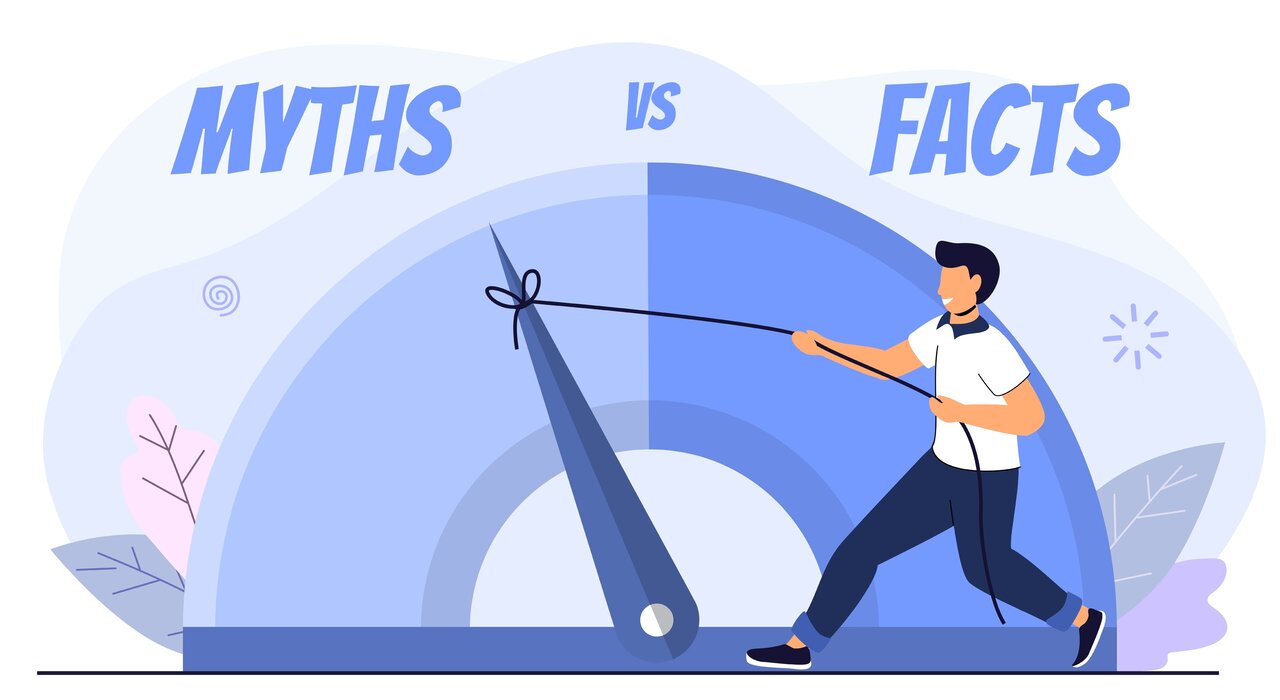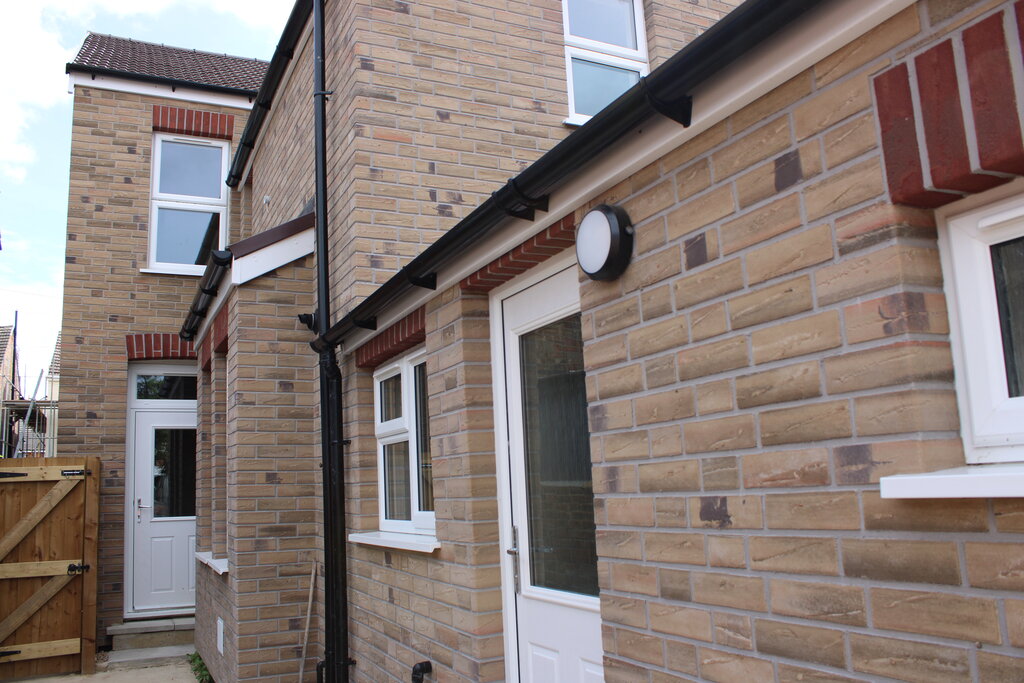
- Myth: EWI Will Make My Home Look Unattractive
- Customised Finishes for Every Home Style
- Colour Freedom
- Textural Variety
- Enhancing Property Features
- Myth: EWI Is Only Suitable for Older Homes
- Older Homes and Their Unique Challenges
- Modern Homes and Their Evolving Needs
- Addressing Varied Home Conditions
- Future-Proofing & Value Addition
- Myth: EWI Will Cause Damp Inside My Home
- Understanding EWI’s Moisture Mechanics
- EWI and Condensation Control
- Ensuring Proper Installation
- Preventative Measures Post-EWI
- Myth: Installation of EWI Is Disruptive and Time-Consuming
- The Nature of EWI Installation
- Professional Planning and Execution
- Time Frame Considerations
- Post-Installation Advantages
- Myth: EWI Doesn't Offer Value for Money
- Immediate Reduction in Energy Bills
- Long-Term Financial Savings
- Increase in Property Value
- Environmental and Health Returns
- Potential Access to Grants and Incentives
External Wall Insulation (EWI) is an increasingly popular solution for improving energy efficiency in homes. However, as with many emerging technologies, myths and misconceptions can arise. In this post, we aim to debunk five of the most common myths surrounding EWI.
Myth: EWI Will Make My Home Look Unattractive
External Wall Insulation (EWI) systems, far from detracting from your home’s aesthetics, can be a revitalising exterior upgrade, both in terms of design and structural appearance.
Customised Finishes for Every Home Style
- Brick Slips: For those wanting to retain or achieve a classic brick façade, brick slips are a perfect choice. These thin cuts of real brick or brick-like materials offer the authentic look of brickwork, while still allowing for the energy benefits of EWI.
- Silicone Renders: Offering a modern, sleek finish, silicone renders come in a vast array of colours and can be tailored to a smooth or textured appearance, depending on homeowner preference.
- Pebble dashing or Dry Dashing: For homes in areas where this finish is popular or for those who simply prefer its distinct appearance, EWI can be finished with a pebble dash, offering both insulation and a tried-and-true aesthetic.

Colour Freedom
- Broad Spectrum: Modern EWI systems offer a comprehensive colour palette, from subtle, neutral tones to vibrant hues. This enables homeowners to either seamlessly integrate the insulation with the existing structure or make a bold style statement.
- Fade Resistance: Advanced render formulas are designed to be UV-resistant. This ensures that colours remain vivid and true over time, reducing the need for frequent touch-ups or repaints.
Textural Variety
- Depth and Character: Apart from colour, homeowners can also select from a range of textures. Whether it's a coarse grain that adds a tactile depth or a fine grain for subtle sophistication, EWI finishes can be customised to each home's unique style.
- Pattern Possibilities: Techniques such as scraping, trowelling, or even creating bespoke patterns can be employed to give your façade a unique and tailored appearance.
Enhancing Property Features
- Architectural Accents: EWI doesn’t obscure or flatten out your home’s features. On the contrary, with skilled installation, architectural details such as archways, window sills, and door frames can be accentuated, adding charm and character.
- Integrated Solutions: Modern EWI systems can be seamlessly integrated with other exterior elements like shutters, vents, and downlights, ensuring a cohesive and harmonised appearance.
Myth: EWI Is Only Suitable for Older Homes
The belief that External Wall Insulation (EWI) is only suitable for older properties is a common misconception. In reality, EWI provides a range of benefits that are advantageous for both older and newer homes alike.
Older Homes and Their Unique Challenges
- Historic Construction: Many older homes were built without the energy efficiency measures we have today. They may lack cavity walls or have poorly insulated solid walls, making them prime candidates for EWI.
- Preservation of Character: EWI allows older properties, especially heritage or period homes, to retain their original interior features while enhancing thermal performance from the exterior.
- Aesthetic Upgrades: Apart from insulation benefits, EWI can provide older homes with a refreshed and rejuvenated exterior appearance, merging classic charm with a modern finish.
Modern Homes and Their Evolving Needs
- Achieving Higher Efficiency Ratings: Even newer homes, which may already possess good energy ratings, can reach an even higher level of efficiency with EWI, ensuring maximum energy savings.
- Regulatory Compliance: As building regulations evolve, pushing for higher energy efficiency standards, EWI offers a proactive solution for homeowners to ensure their properties remain compliant in the future.
- Design Flexibility: Modern homes can benefit from the aesthetic versatility EWI offers. Whether aiming for a minimalist design, a rustic look, or anything in between, EWI systems have finishes and textures to suit every architectural style.
Addressing Varied Home Conditions
- Tackling Specific Issues: Homes, irrespective of their age, might have particular walls or sections more exposed to the elements or prone to cold bridging. EWI can target these problem areas, ensuring consistent insulation coverage.
- Adaptable Solutions: The flexibility of EWI means it can be customised to address specific needs. This includes enhancing sound insulation, improving fire resistance, or catering to any other unique requirement a home might present.
Future-Proofing & Value Addition
- Sustainability Goals: With an increasing emphasis on green living and reduced energy consumption, installing EWI is a forward-thinking move for any home, new or old.
- Property Value Boost: EWI often leads to an increase in property value. An energy-efficient, aesthetically pleasing home appeals to prospective buyers, making it a smart investment for the future.
Myth: EWI Will Cause Damp Inside My Home
One of the persistent misconceptions surrounding EWI is that it can lead to dampness inside the house. Let's break down this myth and provide a clearer perspective on how EWI interacts with moisture and humidity.
Understanding EWI’s Moisture Mechanics
- Breathability: Quality EWI systems are designed to be breathable. This means they allow water vapour to pass through, ensuring that any moisture within the walls can escape outward, preventing the build-up of dampness.
- Water Repellency: The external finishes used in EWI, especially modern silicone renders, are hydrophobic. They repel rainwater, preventing it from penetrating the insulation layer and the underlying wall.
EWI and Condensation Control
- Reduced Cold Spots: By insulating the external walls, EWI minimises temperature differences on the internal wall surfaces, reducing the risk of condensation which can otherwise lead to dampness and mould growth.
- Regulating Internal Humidity: Properly installed EWI systems can help in maintaining optimal humidity levels inside the house, further reducing the likelihood of condensation.

Ensuring Proper Installation
- Detailed Surveys: Before EWI installation, a thorough assessment should be conducted to identify any pre-existing damp issues. Addressing these issues prior to installation ensures the insulation performs effectively without exacerbating any damp problems.
- Quality Materials: Using water-resistant and breathable insulation materials, combined with suitable renders and finishes, is vital to ensure that moisture does not get trapped.
- Skilled Installation: A professional installation team will ensure that the EWI system is installed with precision. Therefore, avoiding any gaps, bridges, or areas where water could penetrate or get trapped.
Preventative Measures Post-EWI
- Regular Maintenance: Like any home system, occasional checks and maintenance, such as ensuring the render is in good condition or that gutters and downspouts are clear, can prevent potential moisture issues.
- Ventilation: Ensuring that the home remains well-ventilated, especially in high-humidity areas like bathrooms and kitchens, complements the EWI in preventing internal dampness.
Myth: Installation of EWI Is Disruptive and Time-Consuming
External Wall Insulation (EWI) is often mistakenly viewed as a lengthy and bothersome process. While any home improvement project will involve a certain level of disruption, the application of EWI can be more streamlined and less intrusive than many homeowners anticipate.
The Nature of EWI Installation
- External Work: One of the primary advantages of EWI is that the majority of the work is carried out externally. This means the daily routines inside the home remain largely undisturbed.
- Minimal Scaffolding: Unlike extensive structural renovations, EWI often requires only minimal scaffolding, which is usually erected and dismantled relatively quickly.
Professional Planning and Execution
- Efficient Assessment: Before the actual installation begins, professionals conduct a comprehensive assessment of the property. This allows for the anticipation of any potential challenges, ensuring a smoother installation process.
- Sequenced Work: Experienced installers often operate in a systematic, sequenced manner.
Time Frame Considerations
- Size and Complexity: The duration of the installation largely depends on the size of the property and the complexity of its design. Simple, smaller homes may only take a few days, while larger properties with intricate details might extend the timeline.
- Weather Dependency: External factors, such as weather conditions, can influence the speed of the process. While some advanced EWI materials can be applied in diverse weather conditions, extreme weather might necessitate short delays.
Post-Installation Advantages
- Immediate Benefits: Once installed, the benefits of EWI, such as enhanced thermal comfort and reduced energy bills, are immediately noticeable. This quick pay-off often offsets any minor inconveniences faced during the installation.
- Low Maintenance: EWI systems, especially when combined with modern renders, require minimal maintenance. This longevity means homeowners won’t face frequent disruptions for repair or redoing the insulation.
Myth: EWI Doesn't Offer Value for Money
There's a common misconception that the investment in External Wall Insulation (EWI) doesn't yield significant returns. However, when we examine the immediate and long-term benefits of EWI, the value proposition becomes clear.
Immediate Reduction in Energy Bills
- Enhanced Thermal Efficiency: EWI significantly reduces heat loss from a property, meaning heating systems don't have to work as hard or as often, leading to immediate savings on energy bills.
- Adaptability to Seasons: Not only does EWI keep homes warmer in the winter, but it also helps in maintaining cooler interiors during the summer months. This reduces reliance on air conditioning and fans.
Long-Term Financial Savings
- Durability: Quality EWI systems are designed to last for decades. Over this period, the cumulative savings on energy bills can far outweigh the initial installation cost.
- Maintenance Costs: Modern EWI systems are robust. When coupled with high-grade renders, require minimal maintenance, saving homeowners potential future repair expenses.
Increase in Property Value
- Aesthetic Improvement: EWI provides an opportunity to refresh the external appearance of a home, making it more appealing to potential buyers.
- Energy Efficiency Ratings: Homes with EWI often have improved Energy Performance Certificate (EPC) ratings.
Environmental and Health Returns
- Carbon Footprint: By optimising energy consumption, EWI contributes to a reduction in CO2 emissions, aligning with global sustainability goals.
- Health Benefits: By eliminating cold spots and reducing the risk of dampness and mould, EWI creates a healthier living environment. This can potentially save on medical bills and enhance overall well-being.
Potential Access to Grants and Incentives
- Energy Efficiency Programs: Governments offer incentives, rebates, or grants for homeowners looking to enhance their property's energy efficiency. Installing EWI may make homeowners eligible for such financial support.
Have you heard of other myths about EWI? Let us know below and we can debunk them for you!
